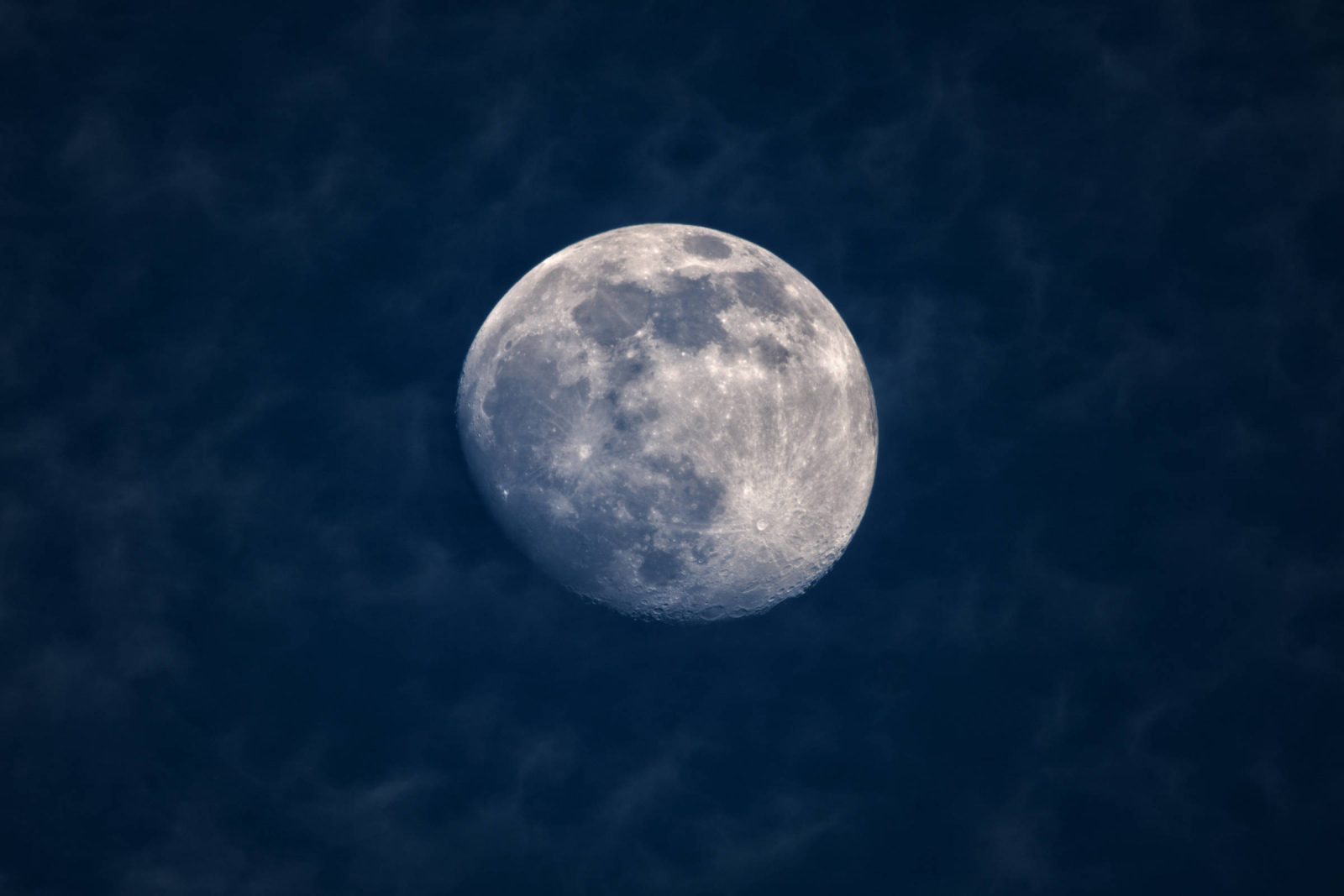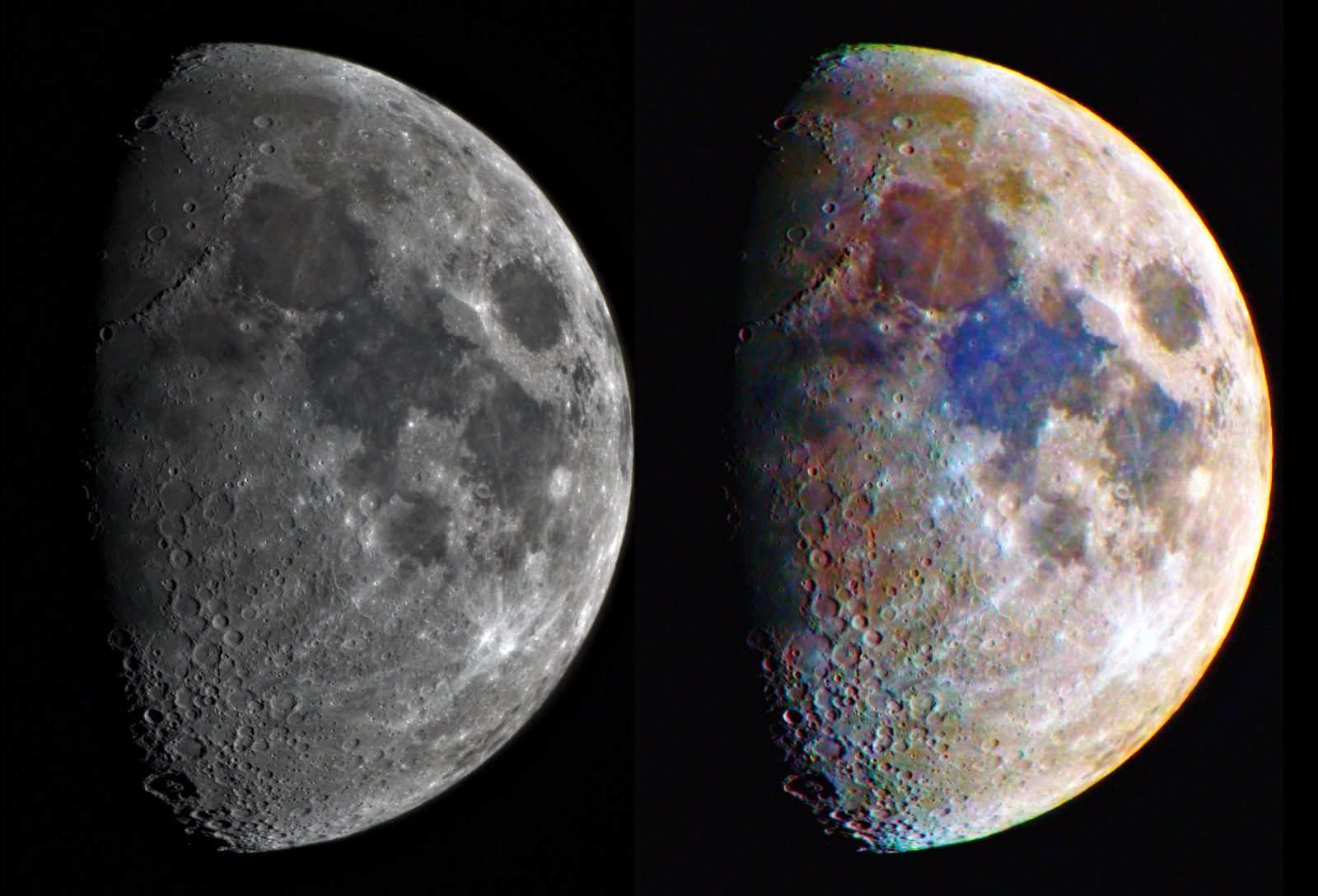To the human eye, the moon appears – apart from a more or less yellowish to reddish coloration caused by the Earth’s atmosphere – colorless or monochromatic. The surface of the moon is characterized by the lighter terrae (crater-saturated highlands) and the darker maria (“seas” – lava-filled large impact basins).
The image below shows the moon behind a thin veil of clouds on 24.04.2021 at 18:14:02 UTC from a distance of 365,398 km at an apparent diameter of 32.8′.

If the colour saturation is increased, it becomes clear that the different regions have quite different colors, which reflect differences in the material composition of the soil. The Mare Tranquillitatis (Sea of Tranquillity; where Apollo 11 landed in 1969) is clearly blue and contrasts strongly with the adjacent red Mare Serenitatis (Sea of Serenity). The basalts of the two basins therefore have a different composition. If you look closely, you can see that some of the lava from the Tranquillitatis basin has obviously flown into the Serenitats basin. I would therefore assume that Serenitatis is older.
The image was taken on 19.01.2024 at 18:19:39 UTC, the moon was 375.760 km away from Earth and appeared at an angle of 31.8′.
